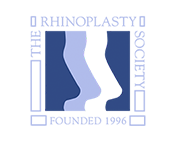
A new look can feel like a breath of fresh air, revitalizing your perspective and helping you feel more confident. Rhinoplasty is a nasal surgery that changes your nose’s appearance or function. This procedure can bring your nose into harmony with your other facial features, correct a bump, or reshape the nasal tip. Rhinoplasty can also improve breathing by addressing airway obstructions like a deviated septum or enlarged turbinates.
If you’re considering rhinoplasty, the first step is to meet with an experienced rhinoplasty surgeon. Rhinoplasty is one of the most challenging cosmetic procedures and requires a skilled surgeon to achieve a natural-looking result. Experienced rhinoplasty surgeons can help you explore the many options available for reshaping the nose.
Open (Precision) Rhinoplasty
Open rhinoplasty is the gold standard for nasal transformation and is one of the most frequently performed types of nasal surgery. In performing an open rhinoplasty, Dr. Michael Epstein makes an incision along the columella – the strip of tissue that divides the nostrils – and lifts the skin off the nasal bones. By opening the nasal area, your surgeon has direct access to the nose’s bones, cartilage, and tissues, allowing for a very precise change in shape and nasal structure.
Closed Rhinoplasty
A closed rhinoplasty isn’t right for every patient, but if you’re looking to make a minor change, this procedure may be a good fit. With a closed rhinoplasty, all incisions are inside the nostrils. Dr. Epstein
has less access to the nose, but this procedure is less invasive than an open rhinoplasty and the healing times are often shorter.
Ethnic Rhinoplasty
You’re unique, and your rhinoplasty should be, too. Ethnic rhinoplasty simply means that the surgeon takes a patient’s unique facial features and heritage into account when planning the rhinoplasty procedure.
Patients with genetic roots in Asia, the Middle East, Africa, and Latin America should choose a surgeon with experience performing ethnic rhinoplasties. Non-Caucasian noses can pose a few unique challenges to surgeons, including thicker skin, oily skin, or a weak nasal structure. Surgeons with extensive experience in ethnic rhinoplasty know how to overcome these challenges, achieving a stunning result that complements a patient’s unique appearance.
Revision Rhinoplasty
Do you need a rhinoplasty do-over? If you’ve had previous nasal surgery, you likely have scarring and altered anatomy that can make a second nasal surgery more challenging. Revision rhinoplasty is a highly specialized type of rhinoplasty that repairs damage and improves outcomes after previous nasal surgeries. This complex procedure requires a plastic surgeon with extensive rhinoplasty experience.
Non-Surgical Rhinoplasty
Surgery may not be right for every patient. Some changes to the nose do not always require cuts or incisions. Non-surgical rhinoplasty uses injectable dermal fillers to shape the nose. This procedure can fill in depressions, camouflage humps, and bumps, and reshape the tip. Dermal fillers are temporary, but you can maintain your results with periodic touch-ups.
Ready to Learn More?
As you now know, when it comes to rhinoplasty, you have options. Explore yours at a personalized consultation with Dr. Michael Epstein, our board-certified plastic surgeon, and rhinoplasty expert. Call MAE Plastic Surgery at (847) 205-1680 or contact us online to schedule a visit to our Northbrook office. We look forward to helping you create a new look soon.





